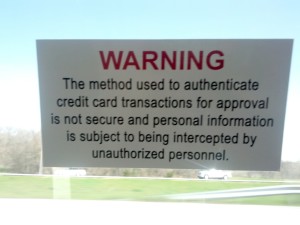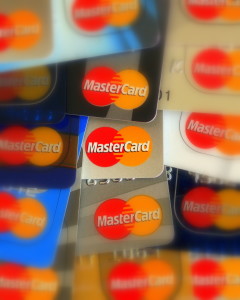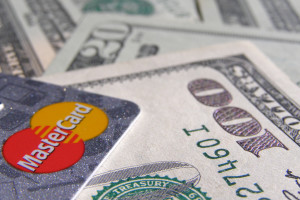September 16th, 2014 by Elma Jane
When plastic cards become digital tokens, they become virtual. So how do you say that the Card is Present or Not Present. The legendary regulatory difference that the cards industry has relied on to differentiate between interchange fees for Card Present and Card Not Present transactions.
Apple secured Card Present preferential rates for transactions acquired by iTunes on the basis that the card’s legitimacy is verified with the issuer at the time of registration and the token minimizes probability of fraud. If an API call to the issuing bank is sufficient to say that the Card is Present, who is to say that the same logic can’t apply to online merchants who also verify the authenticity of Cards on File when they tokenize them? How can one arbitrarily say that the transaction processed with token from an online merchant is Card Not Present, but the one processed with Apple Pay is Card Present even though both might have made the same API call to the bank to verify the card’s validity?
In the Apple case, a physical picture of the card is taken and used to verify that the person registering the card has it. It is not that hard for an online merchant to verify that the Card on File converted as a token does belong to the person performing an online transaction.
As we move towards chip and pin the card present merchants will spend substantial money upgrading their hardware and POS systems. That expense will be offset by that savings in losses due to fraud. MOTO and e-commerce transactions ( card NOT present ) will always have a higher cost because the nature of processing is NON face to face transactions. Of course the fraud and losses are higher when the card is manually entered or given to someone over the phone……Face to face will always have the lowest cost per transaction because it is usually the final step in the sale. Restaurants are low risk because you had the transaction AFTER you eat. If there is a dispute it happens before the merchant even sees the credit card.
In the long run, as cards become digital and virtual through tokens, we are all going to wonder if card is present or not present. May be some will say. Card is a ghost.
Posted in Best Practices for Merchants, Credit card Processing, EMV EuroPay MasterCard Visa, Visa MasterCard American Express Tagged with: (POS) systems, API call, Apple secured Card Present, bank, Card Not Present transactions, card present, card present merchants, cards, cards industry, chip, credit-card, digital and virtual, digital tokens, e-commerce transactions, fees, fraud, hardware, industry, interchange, interchange fees, issuer, issuing bank, low risk, Merchant's, moto, NON face to face transactions, online, online merchants, online transaction, PIN, Processing, Rates, token, transactions
September 15th, 2014 by Elma Jane
Visa has taken advantage of the hoopla surrounding Apple’s application of digital account tokens to replace card numbers for online and mobile purchasing by initiating the roll out of its Token Service to US clients.
Visa Tokens will be made available to issuing financial institutions globally, starting with US banks next month, and followed by a phased roll-out overseas beginning in 2015. The technology has been designed to support payments with mobile devices using all major mobile platforms.
More than 750 staff from across the Visa organisation globally were involved in the effort, working closely with initial launch partners – financial institutions, merchants and processors to ensure the ecosystem was ready. Today, Visa is making these services available and believe it will help transform connected devices and wearables into secure payment vehicles.
Visa Token Service replaces sensitive payment account information found on plastic cards with a digital account number or token. Because tokens do not carry a consumer’s payment account details, such as the 16-digit account number, they can be safely stored by online merchants or on mobile devices to for e-commerce and mobile payments.
The release of the service has been given added urgency by a spate of successful hacks on merchant card data stores, such as the recent plundering of card account data at Home Depot and Target.
MasterCard has its own equivalent Digital Enablement Service, which will be released outside of the US in 2015.
Posted in Best Practices for Merchants, Credit Card Security, e-commerce & m-commerce, Mobile Payments, Visa MasterCard American Express Tagged with: account details, card, card account data, card data, data, digital account, digital account number, e-commerce, financial institutions, MasterCard, merchant card data, Merchant's, mobile, Mobile Devices, Mobile Payments, mobile platforms, online merchants, payments, processors, Token Service, tokens, visa, Visa organisation, Visa Token Service, wearables
December 30th, 2013 by Elma Jane
Earlier this year, American Express offered its cardholders free permanent membership in ShopRunner, a service that gives its members free, two-day shipping at several retail sites. Similarly, PayPal recently tested two-day free shipping offers with a few retailers, whereby shoppers could get free, two-day shipping without an annual fee if they simply checked out using PayPal. The offer had no minimum purchase requirement. Now, Global payment firm MasterCard announced that its customers will receive free, two-day shipping from five of the Internet’s leading retailers. MasterCard also offered a premium service that extends the free, two-day shipping offer to other online merchants. MasterCard joins American Express and PayPal in offering customers free, two-day shipping options at select online retailers.
Collectively ShopRunner, PayPal’s offer, and MasterCard’s recent move may be part of what some in the retail industry are calling the Amazon Prime effect, which is a trend to faster, free shipping services driven in part by Amazon’s Prime service. These offers are changing customer expectations, so that merchants, regardless of size, may need to change free shipping offers to reflect the two-day service available from Amazon Prime, ShopRunner, and now MasterCard.
MasterCard Offer Aims at Large Retailers
To take advantage of the MasterCard offer, shoppers must register at a special MasterCard site, sign in and shop from the site, select two-day shipping at checkout and of course, pay with a MasterCard. Customers will have to pay for the two-day shipping upfront and email the order confirmation to MasterCard to be reimbursed.
Regular online shoppers may purchase an annual subscription for $69.99, extending the free, two-day shipping to about 30 larger retailers, including Nordstrom, J. C. Penney, Home Depot, and GameStop. The premium annual subscription also raises the maximum limit from $500 for six months to $1,500 per year.
The “Free Shipping by MasterCard” offer features five of the retail industry’s best known merchants: Best Buy, QVC, Macy’s, Kohl’s, and Walmart. Online purchases made from these sellers can earn free shipping up to $20 per purchase and $500 maximum over a six-month period.
Implications for Small, Mid-sized Ecommerce Merchants
Free shipping is now or, at least is becoming a key to online ecommerce success. As an example, Forrester Research’s U.S. Online Holiday Retail Forecast 2013, which was released on November 25, found that many online shoppers will leave a site and not buy anything if there is not a free shipping offer available.
Customers may look at shipping as an extra cost or even a waste of money, which is different from how they calculate the gas and inconvenience of going to a store or mall. Even offering free shipping with a minimum purchase can make customers feel better about the checkout process.
Where MasterCard’s offer is different is that it is increasing the expectation around how long a package should take to arrive, and, perhaps, changing how sellers need to think about free shipping.
When an ecommerce retailer purchases pay-per-click advertising, invests in email marketing, buys banner ads, or even prints a brochure or catalog to include in the shipping box, that retailer is investing to acquire or keep customers.
When it comes to accounting for these marketing investments, pay-per-click advertising, as an example, is often taken as part of marketing expenses generally and not attributed directly to a single transaction. For this reason, it is possible that merchants are losing money on some particular orders because of the advertising and promotional expenses associated with those particular orders, but making a profit overall thanks to spreading out marketing costs over all orders and generally increasing the total number of orders and reorders.
Ecommerce businesses may need to start thinking about shipping costs, even two-day shipping costs, in a similar way, not necessarily associating these costs with individual orders, but looking at the business as a whole to see if the free shipping offers are increasing profitability or market share company wide.
New Opportunity for Payment Providers
Free, two-day shipping offers also represent an opportunity for payment companies, like MasterCard, since these free shipping offers could give a particular payment service a competitive advantage. After all, most shoppers will choose the payment card or payment option that provides free shipping over other payment choices.
For the most part, PayPal, American Express via ShopRunner, and now MasterCard are focusing on large retailers, but there may be another opportunity with small and mid-sized online merchants.
Posted in Credit card Processing, e-commerce & m-commerce, Electronic Payments, Point of Sale, Visa MasterCard American Express Tagged with: Amazon, American Express, catalog, checkout, ecommerce, free, macy's. kohls, marketing, MasterCard, Merchant's, online, online merchants, pay-per-click, PayPal, purchases, qvc, retailers, shipping, shoppers, shoprunner, site, walmart
December 16th, 2013 by Elma Jane
1. Account Updater (Visa)
Incorrect billing information leads to declined credit cards, loss of sales and unhappy customers.
Visa touts its Account Updater as an easier way to keep customer data current. The tool appends all card data with up-to-date customer info so businesses can avoid difficulties over address changes, name changes, expired cards and more.
The tool can benefit any business that bills customers on a recurring basis.
It eliminates the need for manual administration, so it can lower your business’s operational costs and customer-service expenses. And by saving your clients the hassle of a declined payment, you can boost customer satisfaction and overall sales.
2. Netswipe
Paying online is convenient for customers, but keying in an unwieldy credit card number is still a pain.
Netswipe from Jumio gives customers an easier way: The tool lets users pay by snapping a photo of their credit card; it’s almost as easy as swiping your card through a traditional card reader.
According to Jumio, customers can use their smartphone or tablet to scan a card in as little as 5 seconds, whereas traditional key entry takes 60 seconds or more, on average. Having a quick and convenient way to pay could help contribute to a positive buying experience and encourage repeat business.
The system is compatible with any iOS or Android mobile device, as well as with any computer with a webcam.
3. Netverify
Jumio’s fraud-scrubbing tool helps you determine if your customers are who they say they are.
Net verify allows customers to snap a picture of their driver’s license or other identification using a smartphone, tablet or PC webcam. Once the image is taken, the tool can verify the authenticity of the documentation in as little as 60 seconds.
That’s much faster and more convenient than asking a customer to fax or mail a copy of their ID in the middle of a transaction.
The tool can verify identifying documents from more than 60 countries…including passports, ID cards and driver’s licenses, and even bank statements and utility bills. Jumio says its software is smart enough to automatically reject nonauthentic documents.
And customers can rest easy knowing that all submitted information is protected with 256-bit encryption to prevent identity theft.
Online merchants embed Netverify into their websites as part of the checkout process.
4. Payment Gateway
Payment Gateway service does all the heavy lifting of routing and managing credit card transactions online.
Portals like this one benefit small businesses by providing a fast and secure transmission of credit card data between your website and the major payment networks. It works a lot like a traditional credit card reader, but uses the Internet to process transactions instead of a phone line.
Payment Gateway also offers built-in fraud-prevention tools and supports a range of payment options, including all major credit cards and debit cards.
5. PayPal Here
Mobile credit card processing services like PayPal Here make it easy to accept credit cards in person using a smartphone or tablet.
PayPal Here and other similar services send you a dongle that attaches directly to your iPhone, iPad or Android device, allowing you to swipe physical credit cards wherever you are.
One major benefit of mobile credit card readers is that they work with the devices you already own. That means there’s no need to carry around additional hardware, aside from the reader add-on itself. Most credit card readers attach to your device via the headphone jack or charger port, and are small enough to fit in your pocket.
The smallest businesses have the most to gain by opting for mobile credit card readers, which are cheaper and far more portable than traditional options.
6. Virtual Terminal
If you do business online, your website needs the infrastructure to accept credit card information.
Web-based applications like virtual terminal offer the basic processing functionality of a physical point-of-sale system, and are easy to install on your business’s website.
The system allows merchants to collect orders straight from the Web, or take orders via phone or mail and before initiating card authorizations online.
It also includes extensive transaction history to help you manage payment data, split shipments, back orders and reversals. Business owners can even receive a daily email report of all credit card transaction activity from the prior day.
Posted in Best Practices for Merchants, Credit card Processing, Credit Card Reader Terminal, Credit Card Security, e-commerce & m-commerce, Electronic Payments, EMV EuroPay MasterCard Visa, Gift & Loyalty Card Processing, Mail Order Telephone Order, Merchant Cash Advance, Merchant Services Account, Mobile Payments, Mobile Point of Sale, Near Field Communication, Point of Sale, Smartphone, Visa MasterCard American Express Tagged with: account, Android, authenticity, card data, card reader, checkout, checkout process, credit card number, credit card transactions, debit cards, declined payment, expired, fraud, id, iOS, mail, mobile device, nonauthentic, online, online merchants, passports, payment data, payment gateway, payment options, phone, point of sale, recurring, smartphone, tablet, verify, visa, webcam



